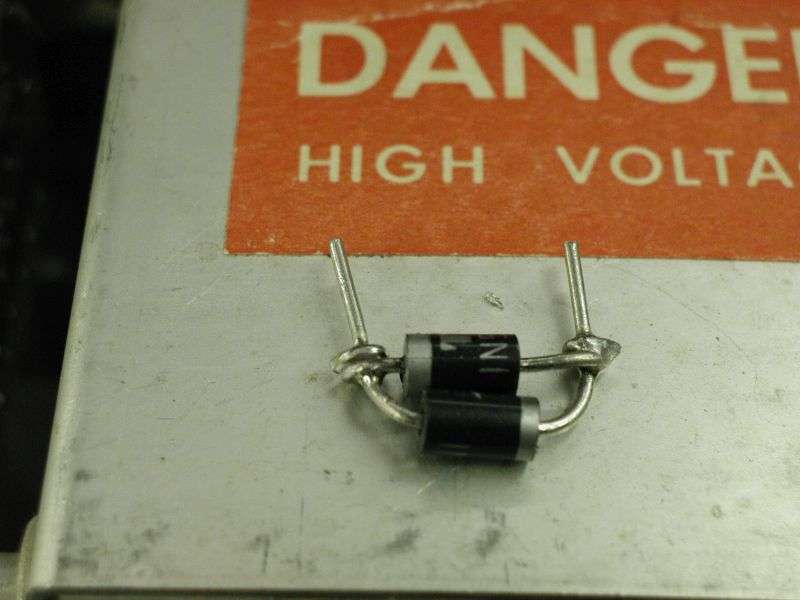Before you flip the meter switch to "Grid", it would be wise to to solder a pair of cross-connected parallel diodes across the lugs of the right-hand meter. We use 6-Amp rectifiers for this. 3-Amp rectifiers might be considered overkill, but the price of the meter makes the price difference look small.
The voltage rating is not an issue. That rating only applies to using a diode as a rectifier. In this application, the diodes will never see any significant voltage on them. The 50-Volt version is probably better than the 1000-Volt part, but not by much.
We learned to add those diodes to both meters in the SB220/221 before we apply any power to it. Learned to do this when a customer's amplifier broke down the first time we keyed it. Poofed the right-hand meter first key of the mike.
Not good for customer relations when that happens.
An exploded R3 is always a bad sign. Had one customer whose line voltage turned out to be a bit higher than ours. This was 30 years ago when the very-oldest SB220 amplifiers were reaching the "awkward age". Until then, that HV transformer was known as a pretty reliable part. This guy was the first one we saw with this fault in his SB220.
His amplifier kept blowing that resistor. We couldn't duplicate the fault no matter what we did. The symptom was that R3 would explode when the power was switched on. If you turned in on and it held, the amplifier would work fine until you turned it off.
Just about wore out his power switch trying to duplicate this fault. Try as we might, that part never went bad when we had it hooked up here. The customer would take it home, and "CRACK!". R3 would explode.
Eventually the transformer's internal insulation continued to deteriorate and finally it broke down here while we were watching. The "ground one side" test proved the HV transformer was bad. The customer was already unhappy. The news didn't improve his mood. The only explanation I could see for the difference between how it behaved here and how it did for him at home was a difference in AC-line voltage.
That was when I built a HV breakdown tester. Figured out we really needed one of those on hand. We don't use it every day, but it's the go-to tool any time a high-voltage "mystery" problem comes in the door.
73
















































